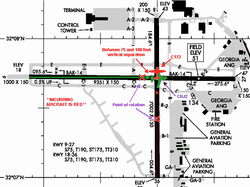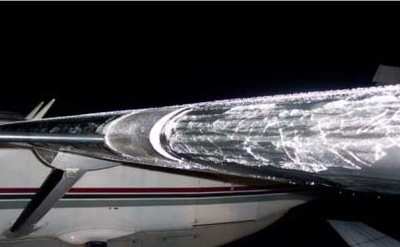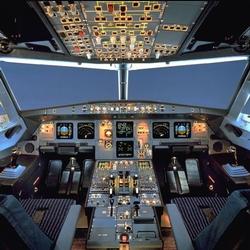Says Agency Must Be Realistic In Applying Board's "Ideal"
Guidelines
 In testimony Wednesday before
Committee on Transportation and Infrastructure, Subcommittee on
Aviation, FAA Deputy Associate Administrator for Aviation Safety
Peggy Gilligan responded to concerns voiced the day before by Mark
Rosenker, chairman of the National Transportation Safety Board,
about the FAA's response to the Board's urgent safety
recommendations.
In testimony Wednesday before
Committee on Transportation and Infrastructure, Subcommittee on
Aviation, FAA Deputy Associate Administrator for Aviation Safety
Peggy Gilligan responded to concerns voiced the day before by Mark
Rosenker, chairman of the National Transportation Safety Board,
about the FAA's response to the Board's urgent safety
recommendations.
Specific concerns cited by Rosenker included recommendations
preventing runway incursions, preventing aircraft flying in icing
conditions, improving audio and data recorders and requiring video
recorders on aircraft, reducing accidents caused by human fatigue,
and improving crew resource management for Part 135 (air taxi)
operations.
"The relationship and interaction between the Federal Aviation
Administration (FAA) and the NTSB is an important component in
aviation safety," Gilligan told the Subcommittee. "Our roles are
different, but complimentary. Through accident investigation, the
NTSB makes findings of probable cause that lead to the issuance of
safety recommendations. The FAA receives the vast majority of the
NTSB’s safety recommendations. In turn, the FAA takes action
on the vast majority of the NTSB’s recommendations, even when
the recommendation asks that we develop new technology to address
the recommendations."
"We always value the intent of the recommendations, even if we
are unable to do exactly what the Board recommends," Gilligan
continued. "Their recommendations represent the ideal, our
consideration of those recommendations must, by law, factor in
certain realities."
Below are Gilligan's unedited statements regarding the areas of
concern cited by the NTSB.
Runway Incursions
 Reducing the risk of runway
incursions is one of the FAA's top priorities. The agency has been
aggressively addressing the issue and has made progress reducing
the most serious incidents, particularly those involving commercial
aircraft. The number of serious runway incursions -- called
Category A and B -- has dropped by more than 40 percent since
fiscal year 2001. In 2006 there was only one serious incursion for
every 2 million take-offs and landings.
Reducing the risk of runway
incursions is one of the FAA's top priorities. The agency has been
aggressively addressing the issue and has made progress reducing
the most serious incidents, particularly those involving commercial
aircraft. The number of serious runway incursions -- called
Category A and B -- has dropped by more than 40 percent since
fiscal year 2001. In 2006 there was only one serious incursion for
every 2 million take-offs and landings.
The FAA has implemented important new technologies to allow
tower controllers to see everything that takes place around them.
One of these is the Airport Movement Area Safety System (AMASS).
AMASS tracks ground movements and provides an alert so controllers
can notify the crew if evasive action is required. The FAA has
installed AMASS at the nation's top 34 airports. ASDE-X, or Airport
Surface Detection Equipment, Model X, is an even more sophisticated
surface detection technology. While AMASS is radar-based, meaning
signals might bounce off rain and fog, ASDE-X integrates data from
a variety of sources, including surface movement radars located on
air traffic control towers or remote towers, multi-lateration
sensors, and aircraft transponders, to give controllers a more
reliable view of airport operations, especially during bad
weather.
By fusing the data from these sources, ASDE-X is able to
determine the position and identification of aircraft and
transponder-equipped vehicles on the airport movement area, as well
as aircraft flying within five miles of the airport. Controllers in
the tower see this information presented as a color display of
aircraft and vehicle positions overlaid on a map of the airport's
runways, taxiways and approach corridors. The FAA is in the process
of enhancing ASDE-X with visual and audio alarms that will alert
controllers to potential collisions.
 The first ASDE-X was activated for
operational use and testing at General Mitchell International
Airport in Milwaukee, Wisconsin, in June 2003. In addition to
Milwaukee, ASDE-X is now operational at T.F. Green Airport in
Providence, RI; Orlando International Airport in Orlando, FL; Hobby
Airport in Houston, TX; Lambert-St. Louis International in St.
Louis, MO; Seattle-Tacoma International in Seattle, WA; Bradley
International in Hartford, CT; and Hartsfield-Jackson International
Airport in Atlanta, GA. ASDE-X is scheduled to be deployed at all
35 OEP airports.
The first ASDE-X was activated for
operational use and testing at General Mitchell International
Airport in Milwaukee, Wisconsin, in June 2003. In addition to
Milwaukee, ASDE-X is now operational at T.F. Green Airport in
Providence, RI; Orlando International Airport in Orlando, FL; Hobby
Airport in Houston, TX; Lambert-St. Louis International in St.
Louis, MO; Seattle-Tacoma International in Seattle, WA; Bradley
International in Hartford, CT; and Hartsfield-Jackson International
Airport in Atlanta, GA. ASDE-X is scheduled to be deployed at all
35 OEP airports.
The FAA is also testing new technologies that will alert pilots
to potential runway incursions. One of these, called Runway Status
Lights, is just what is sounds like -- an advanced series of runway
lights, not unlike traffic lights, that tell pilots whether or not
runways are clear. The operational evaluation of the runway
entrance lights using ASDE-X surface surveillance was completed in
June 2005 at Dallas/Ft. Worth International Airport, and the system
showed promising initial results. An enhanced lighting
configuration is being installed on a second runway at DFW this
year. The evaluation of Runway Status Lights with AMASS began last
year at San Diego's Lindbergh Field. Other new technologies include
an experimental system called the Final Approach Runway Occupancy
Signal (FAROS), which is being tested at the Long Beach/Daugherty
Field Airport in California. FAROS is designed to prevent accidents
on airport runways by activating a flashing light visible to
landing pilots to warn them that the runway is occupied and
hazardous.
Icing
This is another area where the Board has recommended that the
FAA design the solution, test the effectiveness of the solution,
and then mandate the solution. As meteorologists will attest,
simply understanding some of these icing phenomena is difficult and
complex. And then determining how to address these phenomena to
assure safe aircraft operations takes time. That's why we have
taken a multi-pronged approach to the icing issue by taking
immediate safety actions, as well as performing longer-term
research to improve our understanding of icing phenomena.
One of our most effective tools to address safety issues is the
airworthiness directive (AD). We have issued over 100 ADs to
address multiple threats from icing on over 50 different aircraft
models. These ADs cover safety issues ranging from crew operating
procedures in the icing environment to direct design changes. These
ADs have had the effect of significantly reducing the icing risk to
the overall fleet.

Following the issuance of ADs, the FAA conducts general
rulemaking intended to institutionally prevent the same icing risk
for future airplane designs that were averted by implementing ADs
on specific models. FAA is presently in the process of two
rulemaking efforts on icing. The first, which we anticipate
publishing as a final rule, requires designers to demonstrate
specific airplane performance handling qualities for flights in
icing conditions. The second rulemaking is an NPRM, published on
April 26, 2007, entitled Activation of Ice Protection, which would
introduce requirements to ensure timely activation of ice
protection systems (IPS). The proposed rule would require
installation of an ice detector or activation of the IPS based on
visible moisture and temperature..
The recommendation that we have not yet been able to address in
rulemaking is related to a phenomenon known as supercooled large
droplet (SLD) icing conditions. This phenomenon has been a
challenge because conditions that result in SLD are difficult to
forecast and detect. It is also not easy to reproduce in a test
environment. So, to first forecast and characterize SLD, then
reproduce it, and finally evaluate its affect on aircraft
operations has required extensive research. Our research has
engaged leading experts from academia, industry, and the
government. Due to the technical complexity, our activities
continue today. We are committed to identifying the right solution
for long term design and operational requirements for the SLD
threat. In addition, we have issued numerous ADs that direct the
crews of certain airplane designs to monitor and detect early signs
of the onset of SLD conditions and to exit the area immediately.
These ADs serve as an effective interim measure until such time we
complete our research on SLD and complete the necessary
rulemaking.
Voice and Flight Data Recorders
 The FAA views data
recorders as important tools for the accident investigation,
consequently, we are extremely sensitive to NTSB requests for
improvements in this area. The information provided by Digital
Flight Data Recorders (DFDRs) and Cockpit Voice Recorders (CVRs) is
often the cornerstone in determining the probable cause of an
accident or incident. Therefore, the FAA has had a generally
positive reaction to NTSB recommendations for improvements to data
recorders, including those for additional parameters to collect
more information. We are in the process of three rulemaking
projects that will address a number of the NTSB recommendations on
data recorders. However, as much as FAA understands the priority
NTSB places on data recorder recommendations, the fact is that
there are no major accidents for which a probable cause
determination has not been concluded. The value of data recorders
is realized only after an accident when the information has been
collected and analyzed; they do not prevent accidents in and of
themselves. As accident rate attests, we must be extremely prudent
with regard to how we proceed to improve aviation safety.
The FAA views data
recorders as important tools for the accident investigation,
consequently, we are extremely sensitive to NTSB requests for
improvements in this area. The information provided by Digital
Flight Data Recorders (DFDRs) and Cockpit Voice Recorders (CVRs) is
often the cornerstone in determining the probable cause of an
accident or incident. Therefore, the FAA has had a generally
positive reaction to NTSB recommendations for improvements to data
recorders, including those for additional parameters to collect
more information. We are in the process of three rulemaking
projects that will address a number of the NTSB recommendations on
data recorders. However, as much as FAA understands the priority
NTSB places on data recorder recommendations, the fact is that
there are no major accidents for which a probable cause
determination has not been concluded. The value of data recorders
is realized only after an accident when the information has been
collected and analyzed; they do not prevent accidents in and of
themselves. As accident rate attests, we must be extremely prudent
with regard to how we proceed to improve aviation safety.
The first of these rulemaking projects is an NPRM that proposed
a series of improvements to Cockpit Voice Recorders and Flight Data
Recorders. Some of the proposed improvements are longer recording
times, independent power sources for each box, and emergency power
sources to keep the boxes running when the aircraft's main power
source is disrupted.
The second rulemaking activity is an NPRM, published in November
2006, to specifically address flight data recorder (FDR) data
filtering issues. This proposed rule clarifies the FAA's intent to
ensure the accurate recording of flight data under all operating
conditions. This clarification will ensure that the NTSB has the
most accurate data readily available to conduct investigations in a
timely manner.
The third rulemaking project began in November 1999 when the FAA
proposed the addition of flight recorder equipment to monitor the
Boeing 737 rudder system after several rudder system anomalies had
been identified. The FAA made several safety improvements to the
B737 rudder system, and subsequently mandated a redesign of the
rudders system. In September 2006, the FAA published a supplemental
notice of proposed rulemaking to assess the need for recording
additional B737 rudder parameters.
The improvements required by these three rulemaking efforts will
achieve the right balance between enhancing accident investigation
and wisely investing our safety resources.
Crew Fatigue/CRM
 Flight and Duty time rules have
been in existence since the 1950s, and the 121 domestic and 135
scheduled rules were updated in 1985. The rules on pilot flight
time and rest have evolved along with advances in commercial air
travel. The FAA is confident that, overall, the airline industry
complies with the FAA's current rules. In the intervening time,
much research has been done on fatigue, which has resulted in a
better understanding of complex fatigue-related issues. The
research tells us that this issue does not easily lend itself to a
set of prescriptive rules. While the existing prescriptive rules
have served us well, they do not allow for the flexibility needed
to address the various flight regimes that exist.
Flight and Duty time rules have
been in existence since the 1950s, and the 121 domestic and 135
scheduled rules were updated in 1985. The rules on pilot flight
time and rest have evolved along with advances in commercial air
travel. The FAA is confident that, overall, the airline industry
complies with the FAA's current rules. In the intervening time,
much research has been done on fatigue, which has resulted in a
better understanding of complex fatigue-related issues. The
research tells us that this issue does not easily lend itself to a
set of prescriptive rules. While the existing prescriptive rules
have served us well, they do not allow for the flexibility needed
to address the various flight regimes that exist.
Understanding the limits of a strictly prescriptive regulatory
regime, we worked to alleviate fatigue through other means. Fatigue
countermeasures were first developed by NASA, and include providing
in-flight rest, as well as training crew members on the use of
proper diet, exercising, and even caffeine to manage fatigue.
Fatigue countermeasures are covered during Crew Resource Management
(CRM) initial training and during CRM recurrent training.
It is also critical to understand the role that personal
responsibility plays in fatigue and why prescriptive rules can only
provide a framework for safety. Crew members, mechanics, air
traffic controllers, everyone involved in the safety of flight must
make a personal commitment to report for work well rested and ready
to perform their duties. No regulatory scheme can instill that
sense of personal commitment and professionalism.
One thing we know, aviation operations will always challenge us
in the area of flight time and rest. Aircraft design allows for
longer and longer flight times. Recently, FAA issued approval to
Delta Airlines for flights in excess of 16 hours from New York JFK
to Mumbai, India. This approval was our first implementation of a
fatigue risk management approach. Delta proposed – and we
analyzed and approved – a detailed plan to assure the crew is
rested before the flight begins, is provided appropriate rest
throughout the flight, and have sufficient rest before conducting
the return flight.
The procedure specifically addresses the impact to circadian
rhythm, including the recognized affect of circadian law which
occurs at specific times in the daily cycle. This is an example of
where we need to move in the future -- away from prescriptive rules
and into fatigue risk management.
 Gilligan also noted the FAA's
successes on such issues as reducing the risk of fuel tank
explosions, reduction in CFIT accidents and midair collisions
involving airliners, and implementation of windshear warning
systems. (More detailed comments on these issues are in Gilligan's
full testimony, available here.)
Gilligan also noted the FAA's
successes on such issues as reducing the risk of fuel tank
explosions, reduction in CFIT accidents and midair collisions
involving airliners, and implementation of windshear warning
systems. (More detailed comments on these issues are in Gilligan's
full testimony, available here.)
"... [T]he FAA's first priority has always been, and will always
be, safety," Gilligan concluded. As I said at the outset, we very
much appreciate the unique relationship FAA has with the NTSB and
we consider them a vital partner in advancing the safety of our
Nation's skies. The interaction between the FAA and the NTSB is
certainly a factor in the unparalleled safety record we have
achieved in recent years.
"NTSB has the responsibility to push us and the industry by
identifying everything that could be done. The FAA has the
responsibility to determine the actions that will provide the
greatest safety benefit. We believe we have achieved the proper
balance and are, understandably, proud of the safety record we are
currently enjoying. We will continue to strive to implement NTSB's
recommendations as quickly as prudence, technology and science will
allow."
 ANN's Daily Aero-Linx (04.13.24)
ANN's Daily Aero-Linx (04.13.24) ANN's Daily Aero-Term (04.13.24): Beyond Visual Line Of Sight (BVLOS)
ANN's Daily Aero-Term (04.13.24): Beyond Visual Line Of Sight (BVLOS) Airborne 04.09.24: SnF24!, Piper-DeltaHawk!, Fisher Update, Junkers
Airborne 04.09.24: SnF24!, Piper-DeltaHawk!, Fisher Update, Junkers Aero-News: Quote of the Day (04.14.24)
Aero-News: Quote of the Day (04.14.24) ANN's Daily Aero-Term (04.14.24): Maximum Authorized Altitude
ANN's Daily Aero-Term (04.14.24): Maximum Authorized Altitude









